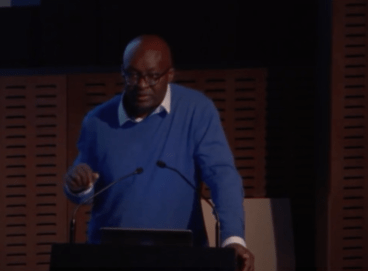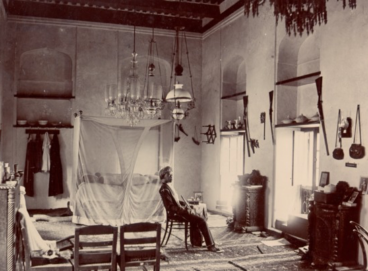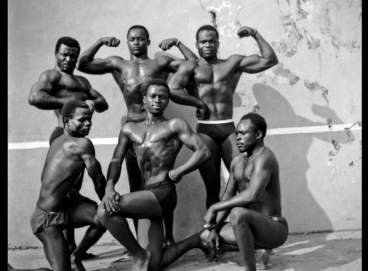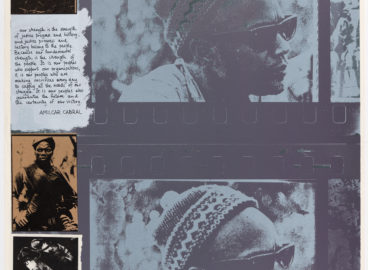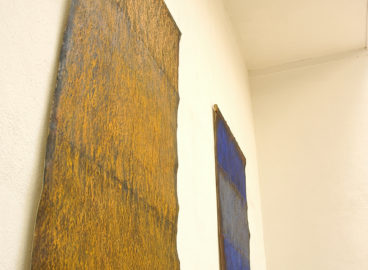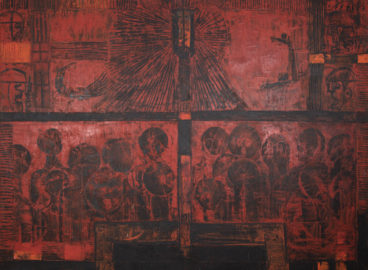In an effort to consider the variegated impacts of COVID-19—a virus with a global reach—post has interviewed curators and directors from vital institutions around the world about how the pandemic has affected their conceptions and practices of programming, civic engagement, and care. This interview with Storm Janse van Rensburg, a Senior Curator at Zeitz Museum of Contemporary Art Africa, marks the second of the series.
Nene Aïssatou Diallo: As a response to Zeitz MOCAA closing due to the pandemic, you have organized “Head-to-Head”, a series of conversations with other cultural organizers and producers in the African context. These conversations between institutions are practices of collaboration, do you see this carrying on when museums reopen? What else has this pause allowed you to do as a museum?
Storm Janse van Rensburg: Our series pre-dates the pandemic, when we initiated it as a platform to engage with art world trailblazers, as part of our talks programming taking place at the museum. We migrated it online at the onset of the pandemic, and maintained it as a weekly forum. To date we’ve hosted Kate Fowle (Director MoMA PS1), Merriem Berrada (Artistic Director Museum of Contemporary African Art Al Maaden, Morroco), Sonia Lawson (Director of Palais de Lomé, Togo), Mandla Sibeko (Founding Director, Owner FNB Art Joburg), Aïda Muluneh (Artist, Founding Director Addis Foto Fest, Addis Ababa), Raphael Chikukwa (Acting Executive Director & Chief Curator, National Gallery of Zimbabwe), Daudi Karungi (Founder of Kampala Biennale, artist, curator and gallerist, Uganda), Tracey Rose (Artist), Michael Armitage (Artist and Founder of Nairobi Contemporary Art Institute), Paula Nascimento (Independent Curator and Architect, Angola), Wangechi Mutu (Artist and Zeitz MOCAA Advisory Board Member), Senzeni Marasela (artist) and Nana Oforiatta-Ayim (Curator, writer, historian).
We will certainly continue the series when we re-open, and are exploring how it can become a hybrid of engagement both online and in-person.
In addition to this programme, we have also offered other online programming, including a relook at relevant material from previous exhibitions and programming, the introduction of online educational activities initiated by our Centre for Art Education as well as our monthly entertainment event moving online as “WOZA at home”.
We have also used the pause as a research recess, for intensive thinking, discussion, and planning. As a nascent institution, we see this as an important and necessary moment to establish the foundations of the institution we want and need to be.
NAD: This collective moment is forcing us to think radically to reimagine the museum on digital platforms and it has also allowed room to rethink museum structures. How do we define a museum that can only take place online?
SJVR: The possibility to radically rethink or re-imagine the museum is harder for some institutions than others, especially from a structural perspective. As a nascent institution we are taking this task seriously, to rigorously interrogate ourselves, and to respond to and reflect our context, in a process of critical institution-making.
We have been investing much work and thinking into our digital spaces, and creating a more visible presence on-line and through social media. That said, we are not thinking of ourselves as an institution that can only live online. We remain committed to the experience of art as an in-person engagement, and an experience that involves others through gathering.
NAD: How important is the notion of community right now?
SJVR: Community should be the cornerstone of our museums. Or let us say communities – we do not function in a homogenous society. We at Zeitz MOCAA understand our audiences or communities as multi-faceted and complex and we relate to and serve these audiences in various ways, striving towards access for all.
For example, we are planning to re-open the museum later this year with a project that will celebrate our home city, Cape Town, its artists, and art, in a project that will be a major departure from how we previously engaged with the ‘local’ and accessibility. It is essential that we connect with, and serve those in our immediate vicinity, whilst continuing to build on our work as a home for contemporary art and artists from Africa and its diaspora.
NAD: How do you imagine the post-COVID-19 cultural landscape for museums and artists in South Africa?
SJVR: As we are living through the initial phase of the pandemic, we are not sure yet how public space will look or feel going forward. It might be a constant flux and adaption, as infection hotspots ebb and flow. We also don’t know how long this will be our reality. We will need to adapt and phase our engagement with art objects within the environment of the museum, as well as the idea of the museum as a space of gathering and a site for engagement. However, there are concerns that the ‘after’ of this pandemic will be very different from the ‘before’.
We have adapted a modus operandi of not making quick or rash decisions, to evaluate and monitor, and to be as adaptive and flexible as possible. It has changed our understanding of mobility and exchange. Whilst making us take a hard look inward, it also has increased acts of solidarity and mutual support.
We have adjusted our medium term programming to be more ‘generous’ – exhibition runs to be extended, more time between exhibitions, and also to re-think and re-do the way in which exhibitions flow. We have also simply given ourselves more time for research and planning than before.
For many artists, most who operate outside of the safety net of the few established commercial galleries, the challenge of survival is real. Our economy is taking a severe strain, and the impact thereof on the livelihoods of artists will be harsh.
It is thus essential that we continue these acts of solidarity and support.
